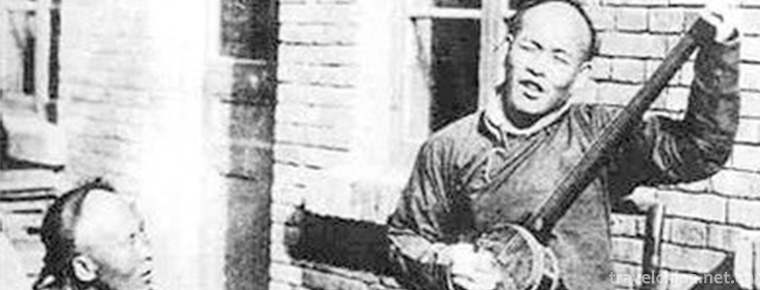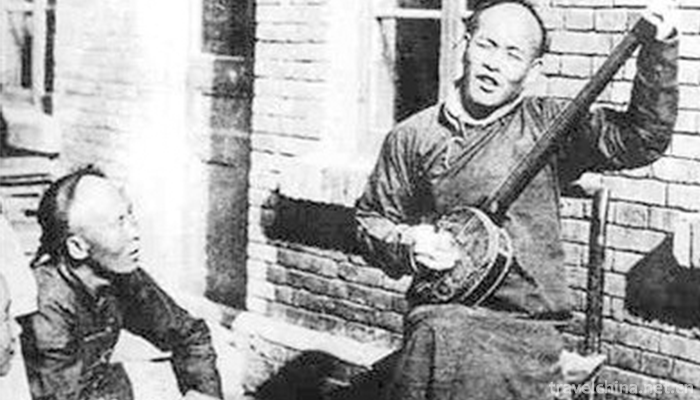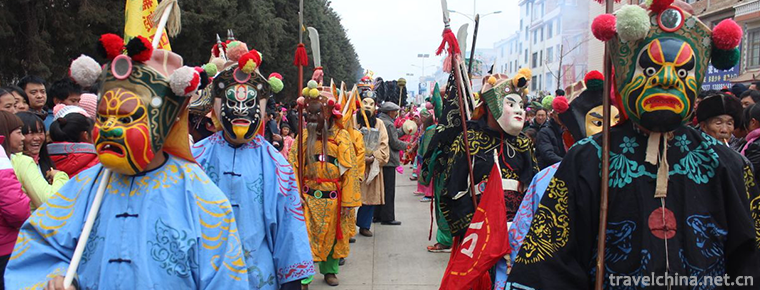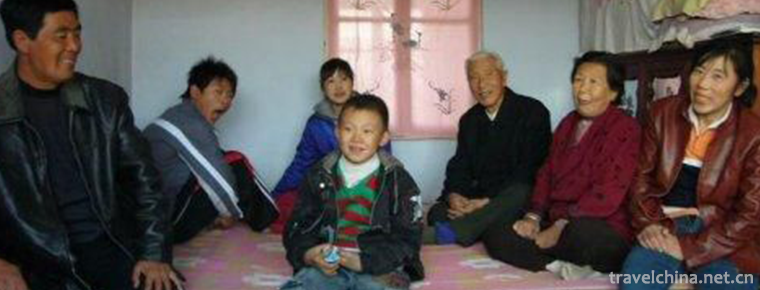2018-12-22

- By ChinaWiki.net
- Chinese Edition
- 2019-06-08
Ningxia Xiaoqu
Ningxia Xiaoqu, a national intangible cultural heritage project, is a traditional rap art form with strong local characteristics.
According to historical records, Ningxia Xiaoqu originated in the Tang Dynasty. During the Guangxu period of Qing Dynasty, Ningxia Xiaoqu was widely popular in singing. In modern times, folk rap artists such as Zhang Yougui and Xia Huahua emerged. With the death of old artists, Ningxia Xiaoqu was on the verge of being lost.
In 1978, Mr. Xu Mingzhi collected, sorted out, standardized and innovated the local song "Ningxia Sitting Singing", which is a "creative transformation and innovative development" of traditional art.
After years of transformation and development, "Ningxia sitting singing" has successfully continued the life of "Ningxia Xiaoqu", making Ningxia Xiaoqu have more diversified artistic effects and more systematic teaching methods.
On November 11, 2014, Ningxia Xiaoqu was selected into the fourth batch of national intangible cultural heritage list.
Historical Origin
Originated at least in the Qing Dynasty, there were Xiaoqu artists in Ningxia.
In 1937, Bai Shouyi, a well-known Hui scholar, made a visit to Ningxia with the "Northwest Investigation Mission" organized by the National Government and recorded it in the form of a diary. In the record, there is a section of what he saw when he arrived at Huangqu Bridge in Pingluo County on July 18.
"Walking along the East Bank of the Yellow Canal, looking at the yellow wheat and green smoke from afar... __________. After collecting cigarettes, a villager made an arc with a neutral voice, singing and reciting words. Peer vendors told me that this is called hilarious. Every time you collect cigarettes, you have time to do this work. I wish you a rich harvest, and you can pay for it with two or three dollars of tobacco and soil."
The so-called "smoking collection" refers to the Opium tobacco fields that were widely planted in Ningxia in the old days. The scene of "singing and chanting" corresponds to the picture of the old Ningxia rappers making a living in the tobacco field during the harvest season. What kind of music is "singing and chanting"? According to the situation and geographical inference, there is a great possibility that it is Ningxia Xiaoqu.
Mr. Bai Shouyi's experience more than 70 years ago reflects a valuable piece of native rap art including Ningxia Xiaoqu during the Republic of China. But if traced back, the origin of Ningxia Xiaoqu is longer.
During the Qingdaoguang Period, when there were disasters in Hanzhong of Shaanxi Province, some local households fled to Yinchuan, Yongning and Zhongning of Ningxia, bringing a number of folk songs from Shaanxi Province, enriching the tunes of local songs in Ningxia. Later, Lanzhou singing artist Yibulang Zi led his cousins and sisters to perform in the streets of Yinchuan.
During this period, there was a coexistence of local and foreign Xiaoqu artists in Ningxia. Local Xiaoqu artists absorbed many elements of Shaanxi and Gansu Xiaoqu while singing, which made Ningxia Xiaoqu further developed and enriched.
Or prosperity or decline, has continued to this day
About from the Qing Dynasty, Ningxia Xiaoqu was widely spread. Its form of performance is gradually fixed, that is, when singing a short passage, one sings with bangles and the other plays with three strings; if the repertoire is longer, two people sit down and sing, one plays with three strings or a Lahu accompaniment vocal lead, the other plays with concise boards and bangles and other rhythmic band tunes; if one performs, he sings by himself.
With the popularity of Ningxia Xiaoqu, more and more artists are selling and singing Ningxia Xiaoqu. In Zhang Shuang's research and textual research, there were not only Han artists, but also Hui artists, such as Huang Rope Craftsman of Ningxia Fucheng (now Yinchuan City), Wang Huluzi of Yongning, Zheng Ma-zi of Lingwu.
Nowadays, these long-gone characters are obviously unfamiliar, but the incomparable names of "grounding spirit" are enough to reflect the local and folk nature of these artists. In fact, this is the most remarkable feature of Ningxia Xiaoqu.
These artists, on New Year's festivals or wedding and funeral events, walk the streets and sing along the street, sometimes invited by the host to the home singing hall. Gradually, some professional classes specialized in singing Ningxia Xiaoqu also appeared. At the same time, there are special performance venues, such as the Lianghu Club Hall, the Fire Temple stage and the Xiaomiao stage in Yinchuan at that time. This situation, whether prosperous or declining, lasted until the Republic of China.
From Ningxia Xiaoqu to Sitting Singing in Ningxia
In the record of Zhang Shuang's Brief History of Ningxia Quyi, after the founding of New China, the first folk artists'performance was held in Gansu Province in 1954. Zhang Yougui participated in the performance on behalf of Yinchuan Special Area at that time, which was also the first time that Ningxia Xiaoqu was put on the big stage.
After the interruption of the "Cultural Revolution", in the mid and late 1970s, Yinchuan folk artist Yan Lu, opera actor Xu Mingzhi and others launched a new round of excavation and collation of Ningxia Xiaoqu. A series of new programs based on Ningxia Xiaoqu came into being.
In 1981, the National Outstanding Quyi Show was held in Tianjin. Xu Mingzhi and Zhang Maoqi won the second prize for creation and performance. Also in this performance, this form of music originating from Ningxia Xiaoqu was officially named "Ningxia sitting and singing".
Today, sitting singing in Ningxia has become the representative of Ningxia's local folk art. As the extension and evolution of Ningxia Xiaoqu on the modern stage, sitting singing in Ningxia is undoubtedly the continuation and inheritance of this ancient type of music.
With fewer and fewer artists, the future is not optimistic.
Like almost all kinds of folk art that can be listed as "non-legacy", Ningxia Xiaoqu, which has entered the threshold of modern times, has also been tested unprecedentedly. Xu Mingzhi, 60 in 2014, is known as "the first person sitting and singing in Ningxia". In order to keep up with the times, he tried many innovations, including adding dance accompaniment to sitting singing in Ningxia, and even absorbing pop music elements such as rap. But "it's still tough".
In 2014, Xu Mingzhi went to the south of Ningxia to make an investigation in order to find out how many people there are still engaged in folk art. The result is not very optimistic, "except for two people talking cross talk, basically no more."
Quyi is still like this, let alone Ningxia Xiaoqu. According to his own experience, in Yinchuan, Zhongning and Qingtongxia, there are also some Ningxia Xiaoqu or Ningxia sitting artists, but "very few", and basically are the elderly. As for the south of Ningxia, "it's gone".
On the stage, Xu Mingzhi's partner is his son Xu Chen. This is the only person he can entrust with the inheritance of his skills. In his view, without innovation, traditional art would have no vitality; but similarly, without the people who inherit and carry forward it, the fate of this native song is just as "grim situation".
Inheritance Significance
The folk rap art which has been spreading in Ningxia for thousands of years has added infinite vitality and pleasure to the local people's life. The task of protecting the folk rap art in Ningxia is still very arduous, and Ningxia continues to promote and strengthen the protection of the project, such as the establishment of the Ningxia folk rap and singing heritage class, training the inheritors who can play and sing the Ningxia sitting and singing section by themselves, publishing the relevant monographs of Ningxia folk rap and singing, organizing the Ningxia folk rap seminars and related competitions, and publicizing Ningxia folk rap and singing to the masses. 。

Ask a Question
Your email address will not be published.



0 Questions